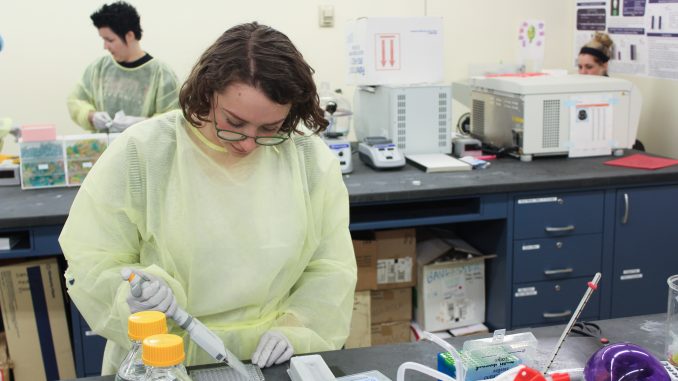
In graduate school, Debra Bangasser wondered why researchers only used male subjects in animal testing. Since then, the psychology and neuroscience professor at Temple has been studying the differences between male and female brains.
Historically, researchers only studied male animals out of concern that testing female animals would have variable data because of the nature of their hormones, Bangasser said. Studying both female and male animal brains allows researchers to understand why each sex is more prone to different psychiatric disorders.
Bangasser follows a policy set by the National Institutes of Health in 2014 that requires testing be performed on both male and female animals. Her research and the NIH policy both suggest that brains operate differently depending on the subject’s sex.
In order to understand why males and females are more prone to different psychiatric disorders, Bangasser said her lab, the Neuroendocrinology and Behavior Laboratory, compares biological and behavioral responses to stress in rats based on their sex.
“My research has looked at this for a long time,” Bangasser said. “While I was a graduate student, I was like, ‘Why aren’t we looking at female brains? I’m a woman, I want to understand what’s happening in female brains.’ … Now, the broader scientific community is appreciating how, by only understanding male biology, we might be missing some important concepts and we might not have the full picture of how treatments work in females.”
Bangasser’s findings show that female rats groom more in response to certain stress hormones.
“We see that there are different patterns of brain activation in male versus female rats,” she added.
Now that the NIH requires studies to test on both male and female animals, some claim the mandate is costly and time consuming, Bangasser said.
Others argue that the inclusion of both male and female subjects, there are now twice as many subjects, and it will cost twice as much and take twice as long to complete a study, she added.
Bangasser doesn’t share this frustration, and neither does her lab.
“[Testing male and female animals] creates a more representative sample,” said Madeleine Salvatore, a research assistant and lab technician in Bangasser’s lab. “Assuming that the endgame of all research is to create information that is applicable to human beings, human beings are both male and female. … You have to include samples that represent reality.”
Hanna Lefebo, a junior neuroscience major who works in Bangasser’s lab, said when it comes to medication, males and females don’t react the same way and studying both sexes is necessary “to get more accurate data.”
“There’s evidence that women have more adverse drug reactions than men,” Bangasser said. “You wonder if that is in part because the drugs were designed for male rodents.”
Bangasser’s lab is currently studying a potential antidepressant treatment. So far, females have been more responsive to the treatment.
Bangasser said the male and female brains are “not vastly different,” but it’s important to understand any differences.
“In some cases, those subtle differences may mean nothing,” she said. “But in other cases, they may be really important to understanding vulnerability or resilience to disease.”
“That’s going to always be a focus of my lab,” she said. “As long as I continue to do research.”
Noah Tanen can be reached at noah.tanen@temple.edu.


Be the first to comment